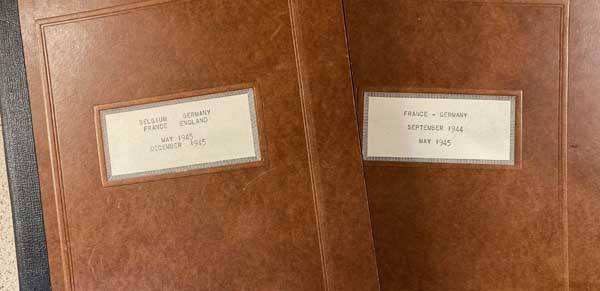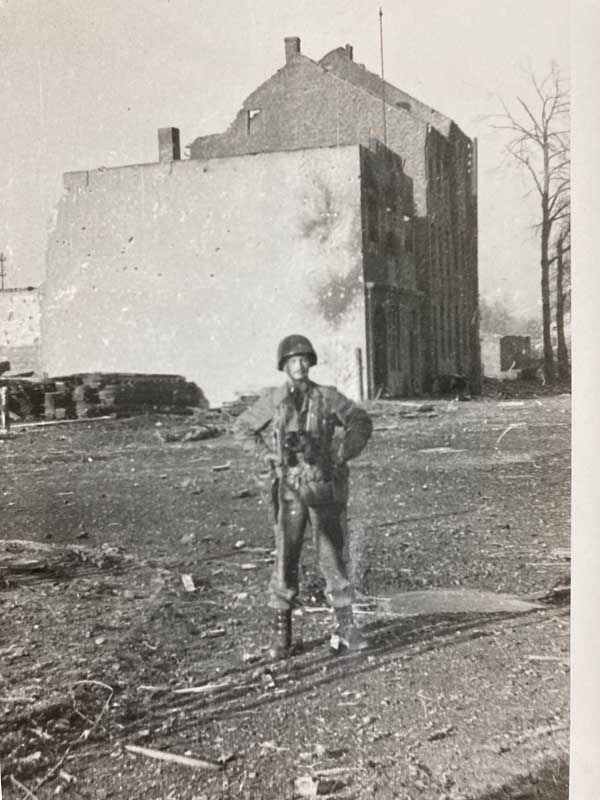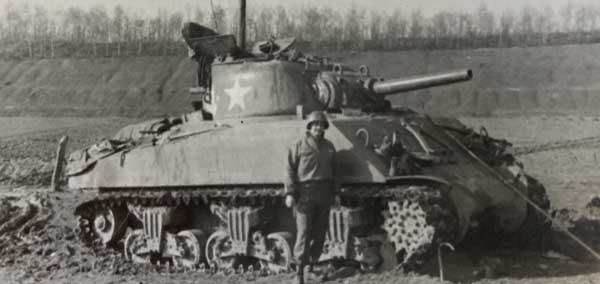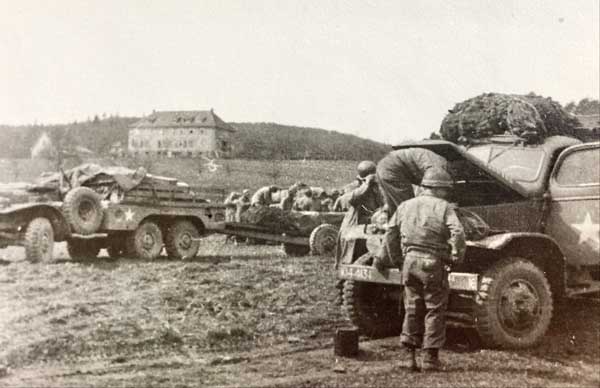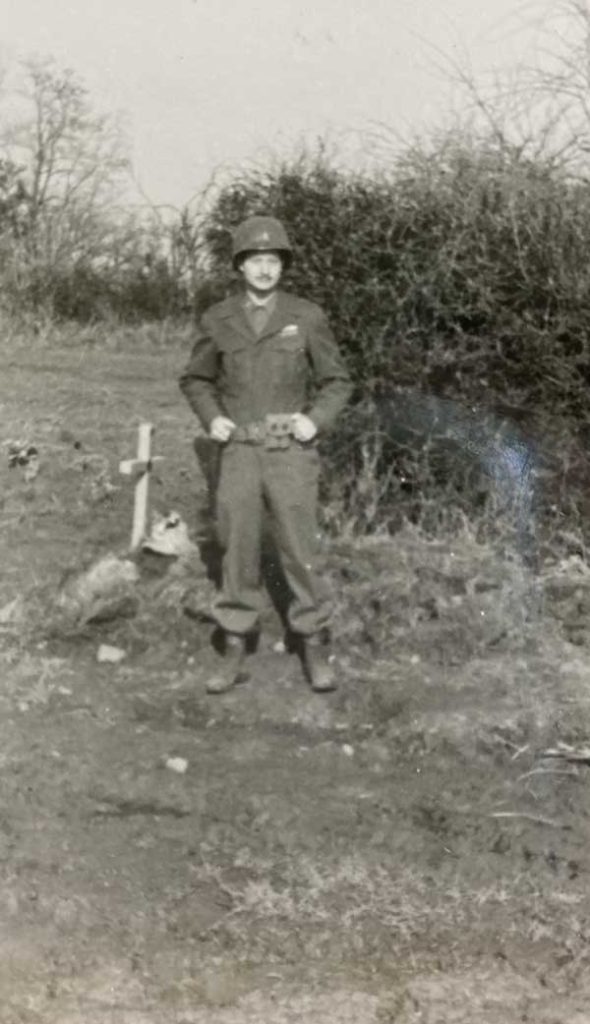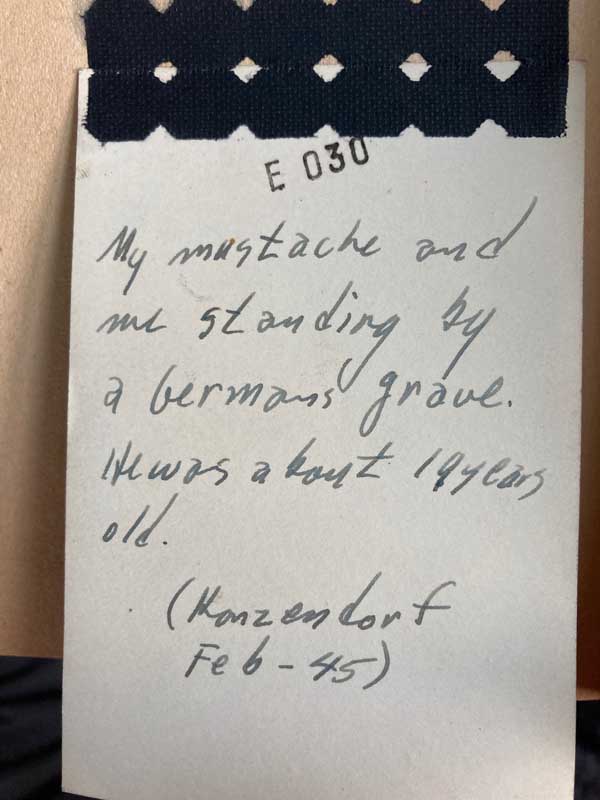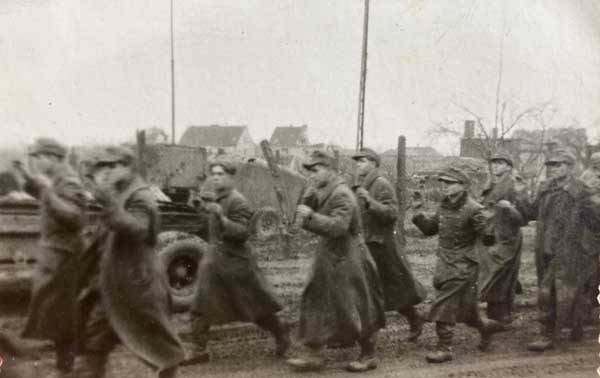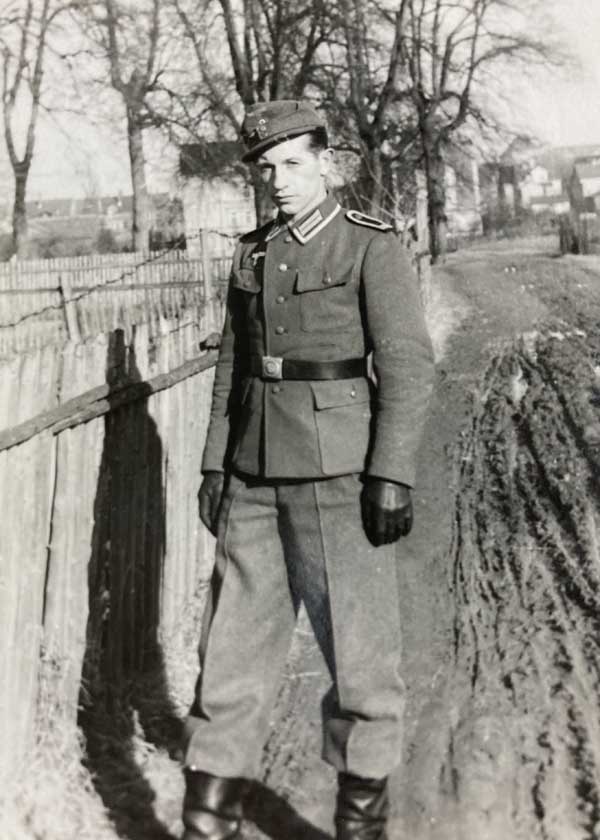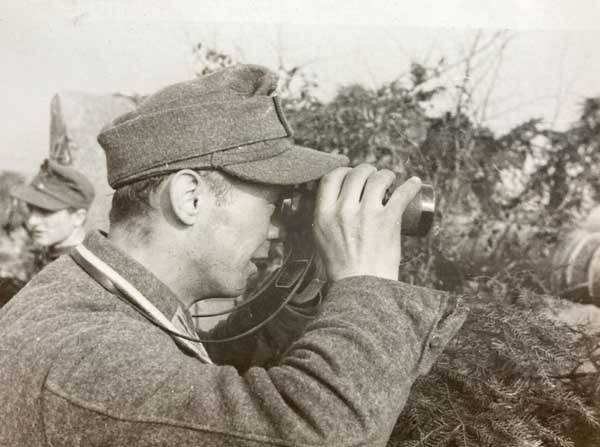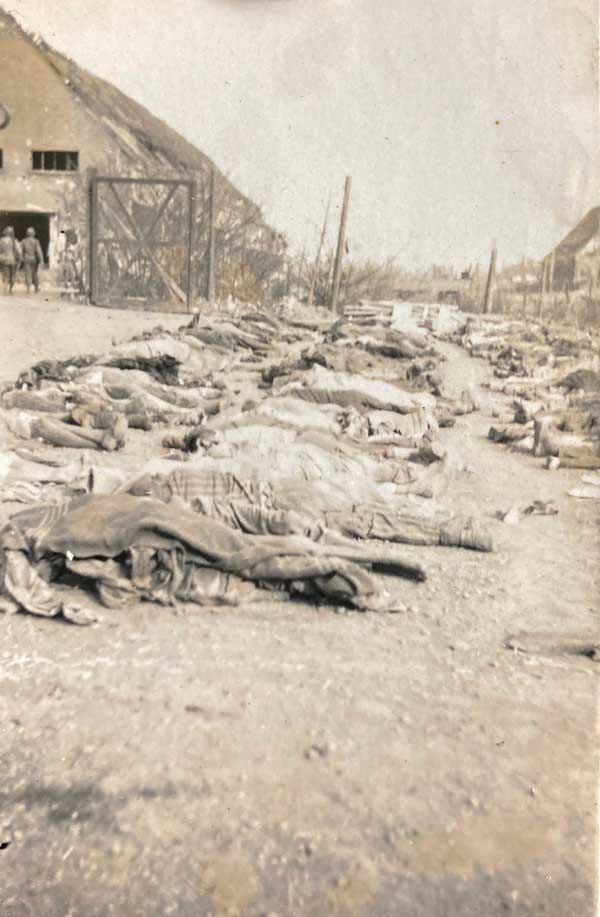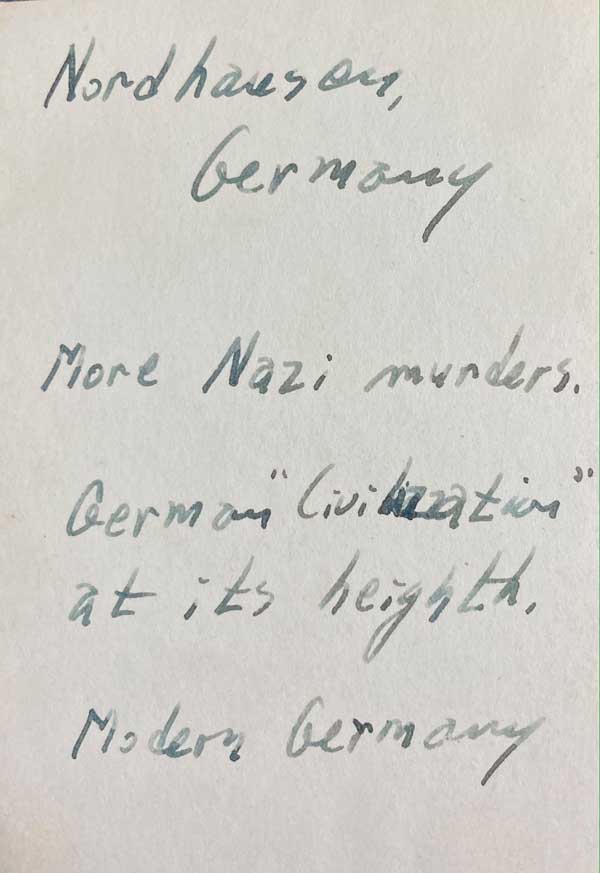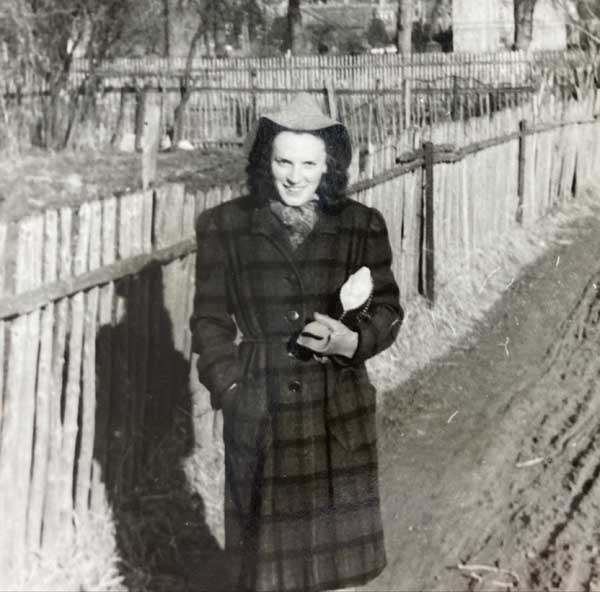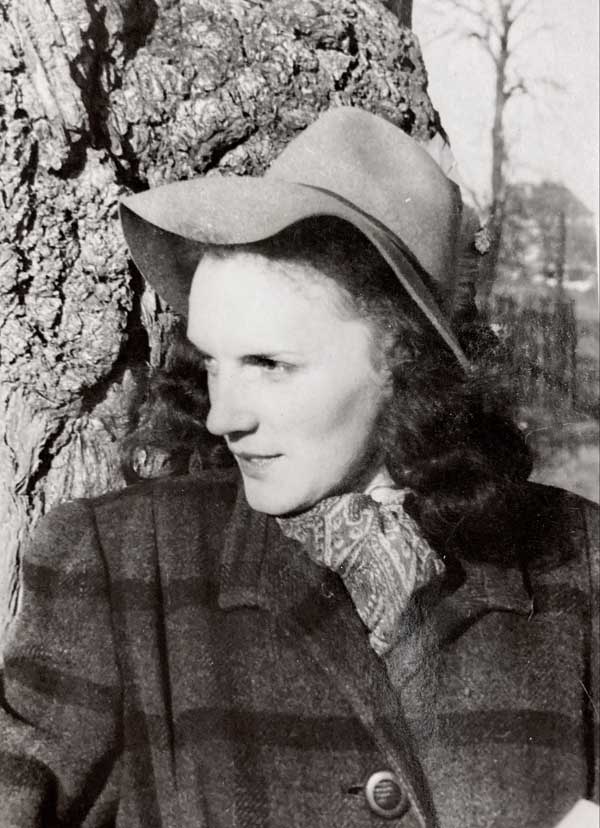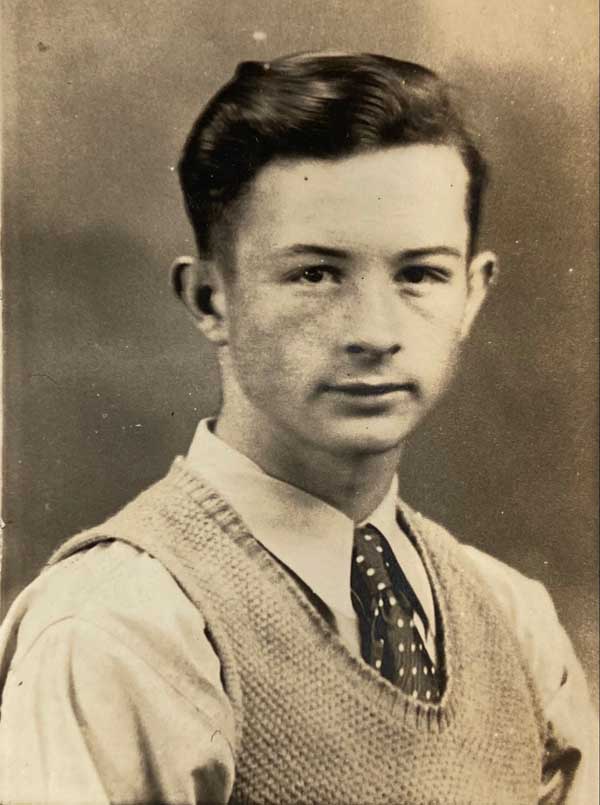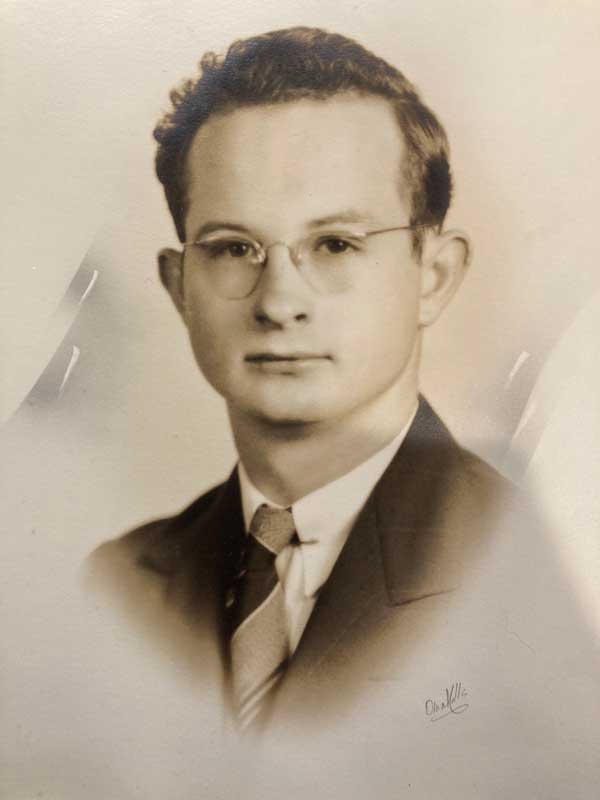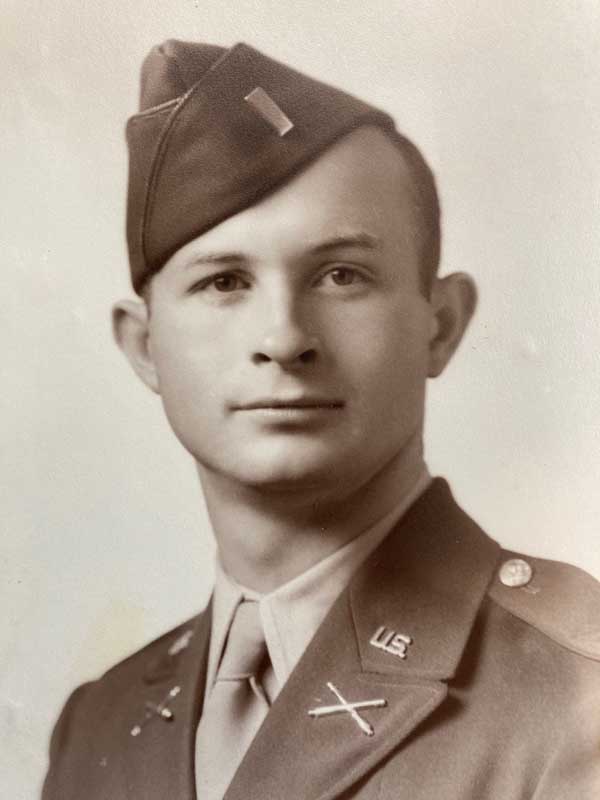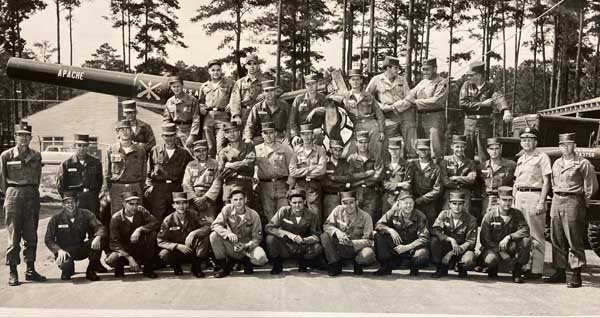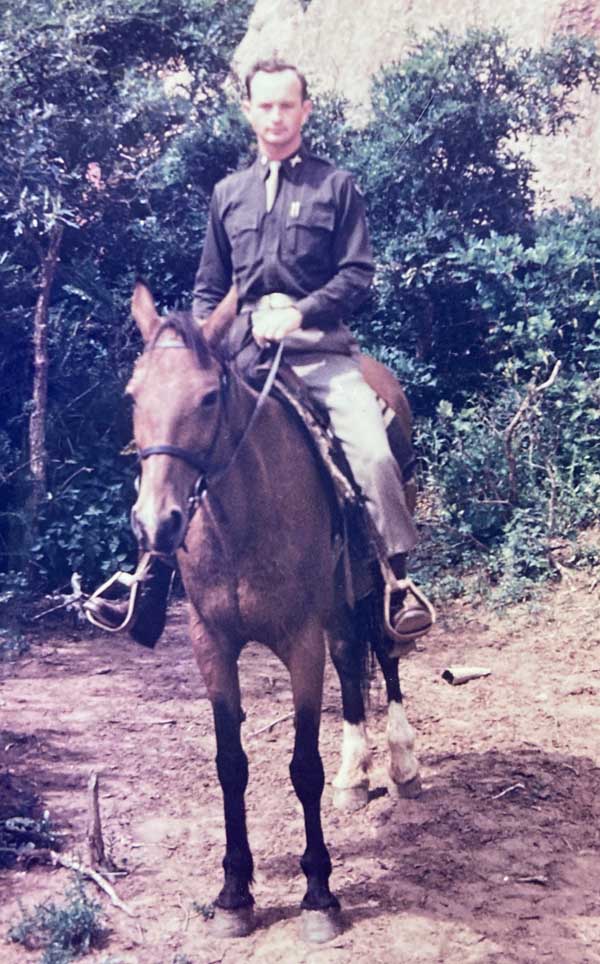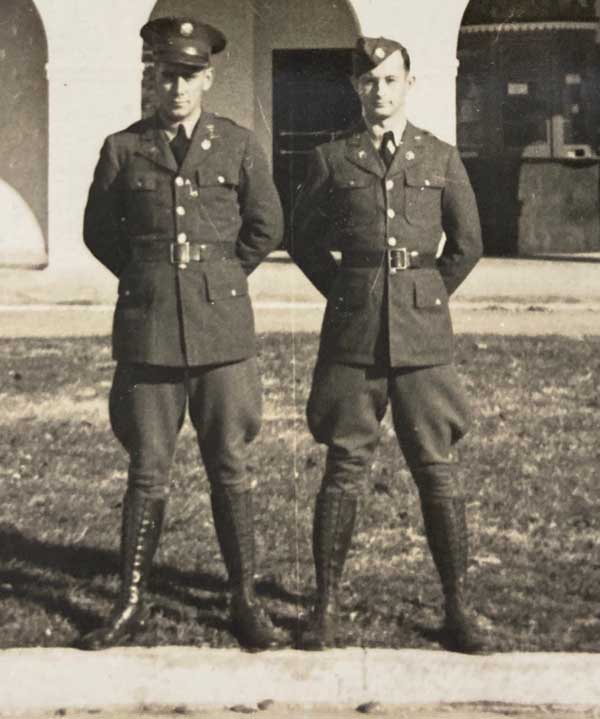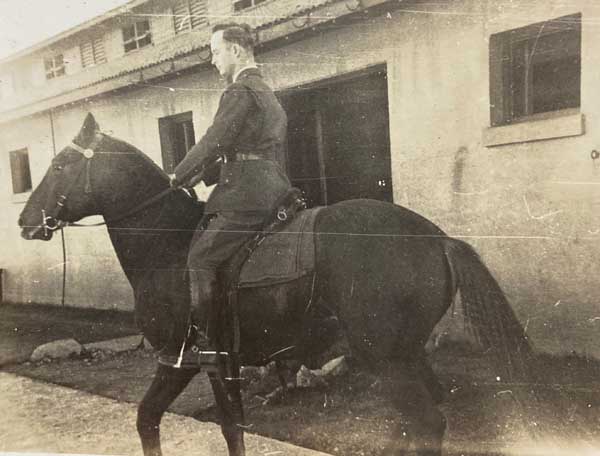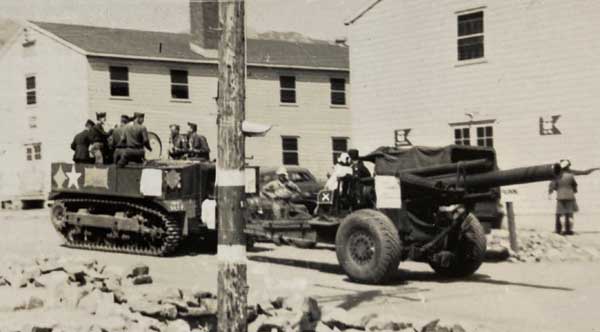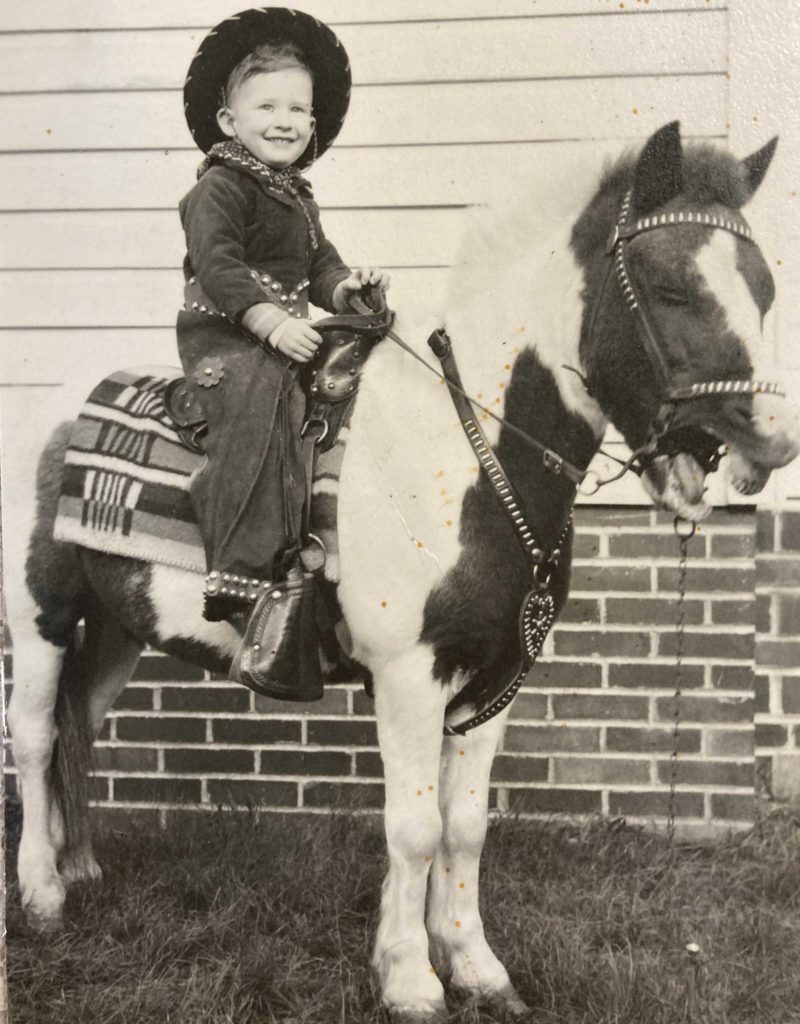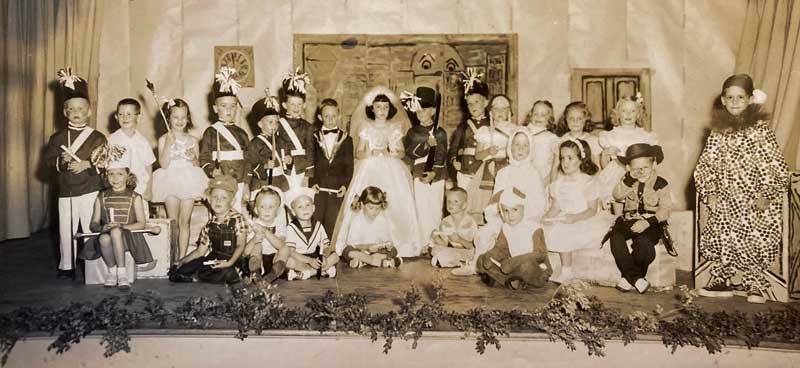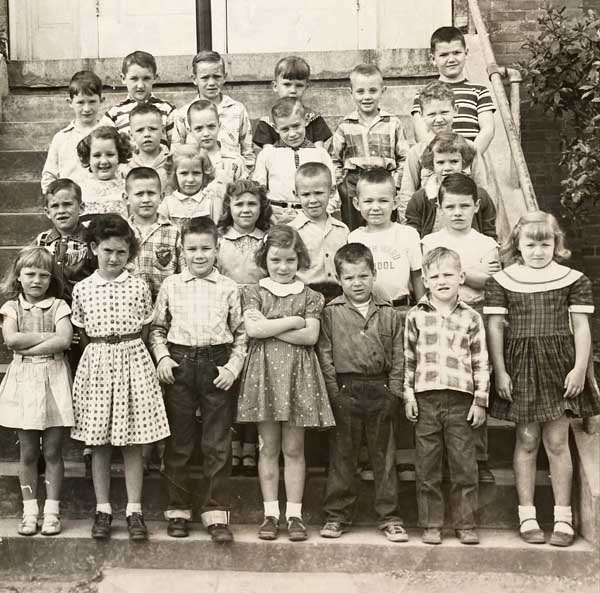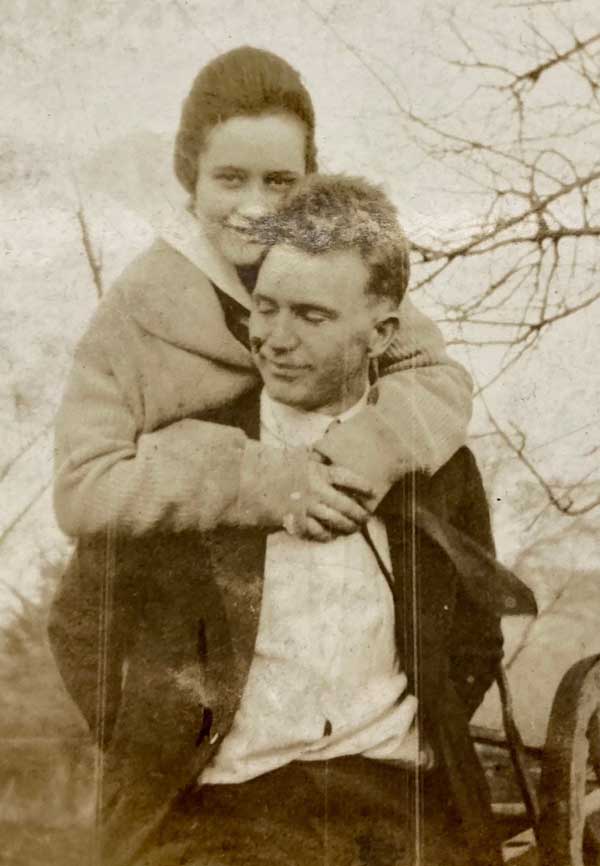The war in Europe was officially over on May 8, 1945, but my father didn’t come home right away. The Germans had done pretty good job of destroying a lot of Europe, and the Allies had finished the war by destroying Germany. In those days, we knew that we couldn’t just walk away from all that destruction and all those defeated Germans, unlike in our more modern wars, where greedy, incompetent people saw a defeated country as a way to get rich.
So my father’s second photo album runs from May to December 1945.
Some places were not destroyed. This is a view up a street in Verviers, Belgium. This could almost be a photo of Broad Street in Rome, Ga, from the same time, except that Broad Street was wider.
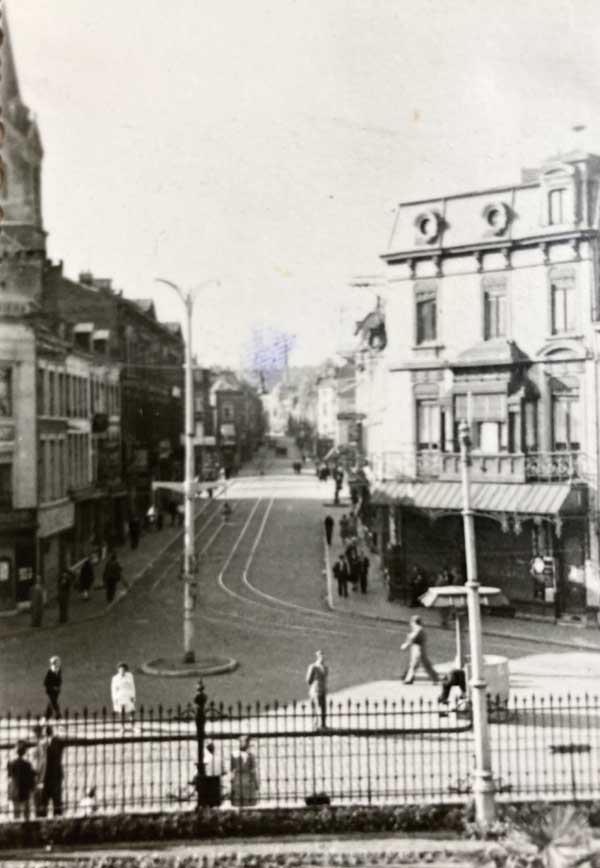
This photo was not captioned. It looks like a vineyard untouched by war.
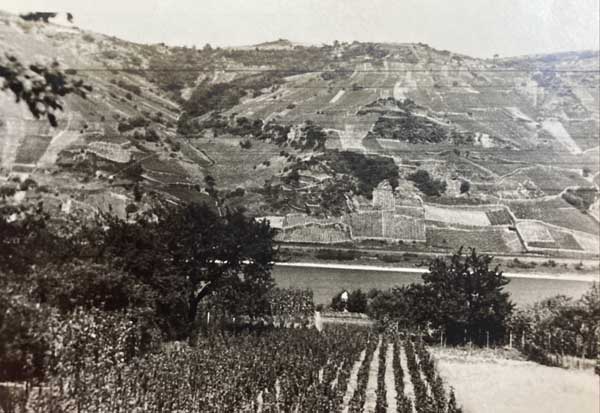
There are photographs of people.
Soldiers.
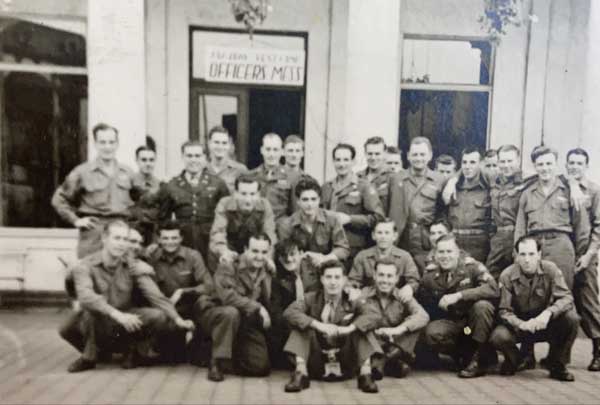
Kids.
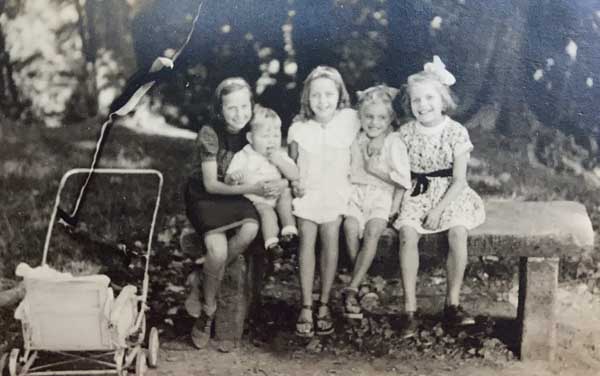
Soldiers and kids.
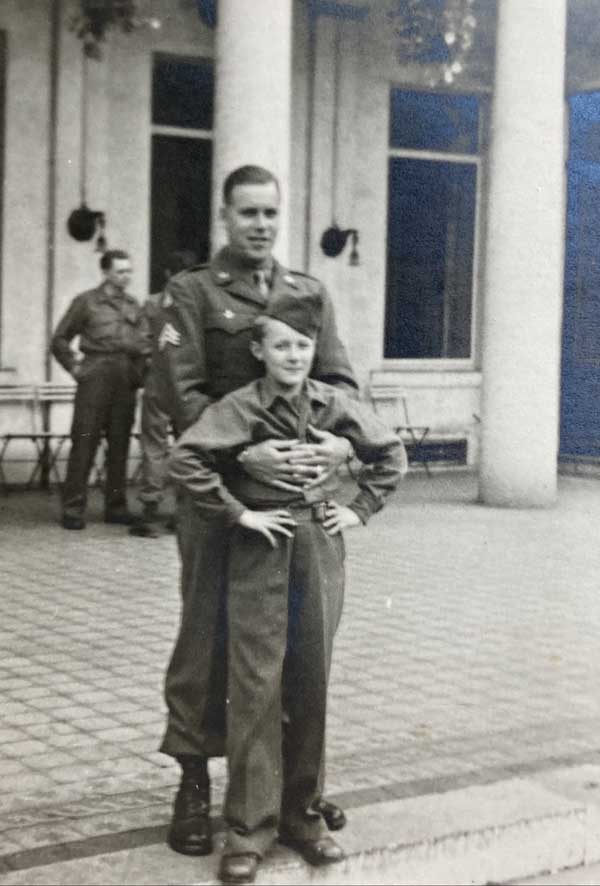
American civilians at a going-home party, just shy of one person in this last supper for Betty.
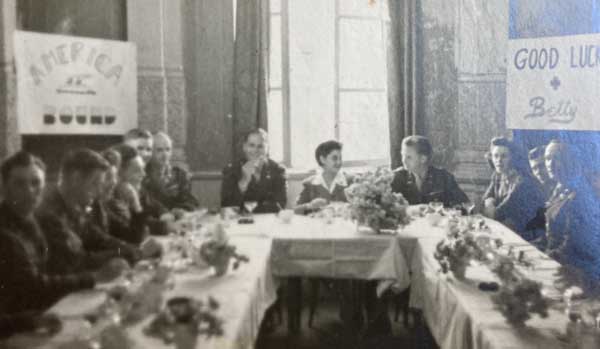
None of these people are identified on the photos, except for “Betty” in the last photo. I have no idea who they were. People my father knew in passing? Good friends? Strangers? I suspect that no one alive today knows who they were.
My father went to Paris.
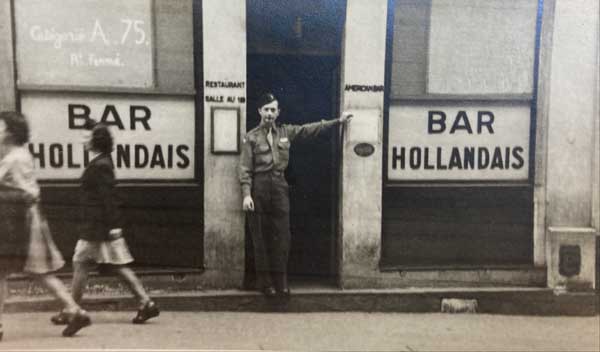
Is that Hemingway in the shadows?
I did an online search for Bar Hollandais in Paris, but I couldn’t find anything. Gone with the wind, I suppose.
My father, on the beach, France, 1945.
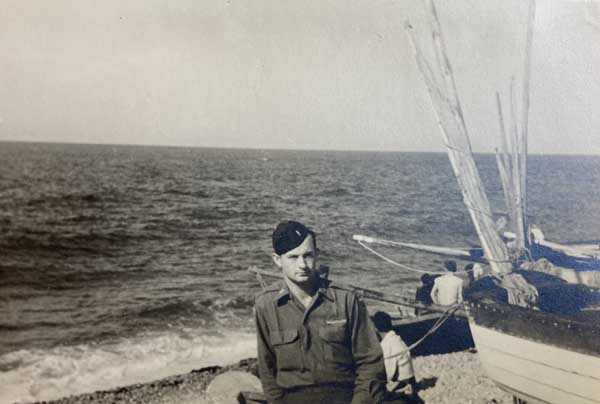
Without his trousers.
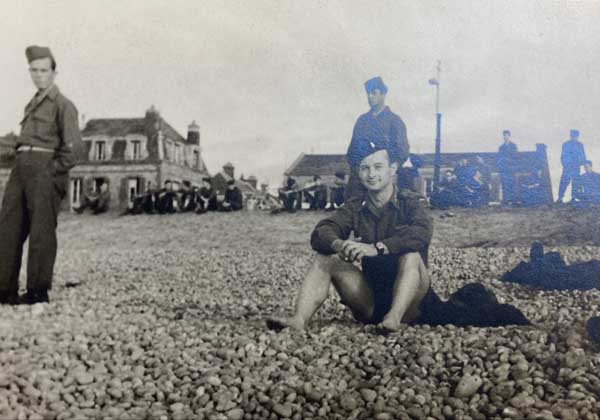
So soon after the war was over, and an artist draws the sea.
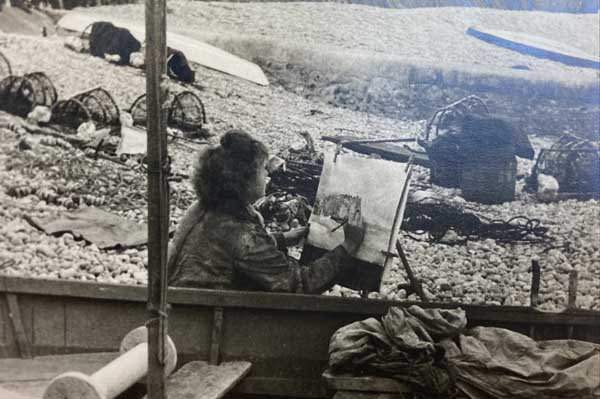
The sun sets on my father’s time in Europe.

But wait. I promised puppies, didn’t I?
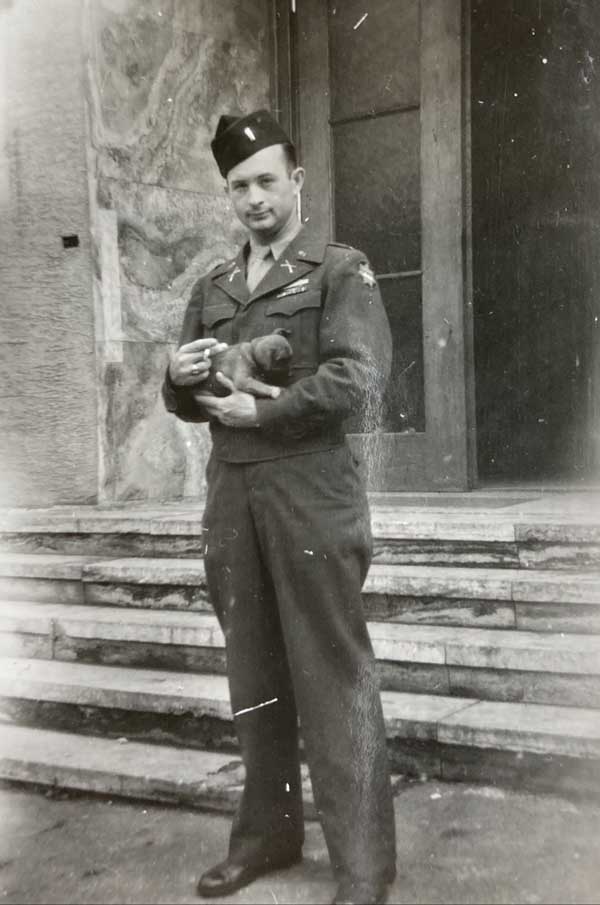
There in no doubt that my father would have picked up a stray puppy in the streets Kornwestheim, Germany. Wikipedia says the town is six miles north of Stuttgart. My father smoked in those days. He told us that on the way back to the US, he was leaning on the railing of the ship, and decided to quit smoking. He threw his pack of cigarettes into the ocean, and he never smoked again. He was clean shaven by the time this photo was taken, and he never grew facial hair again, either.
My father knew how to type.
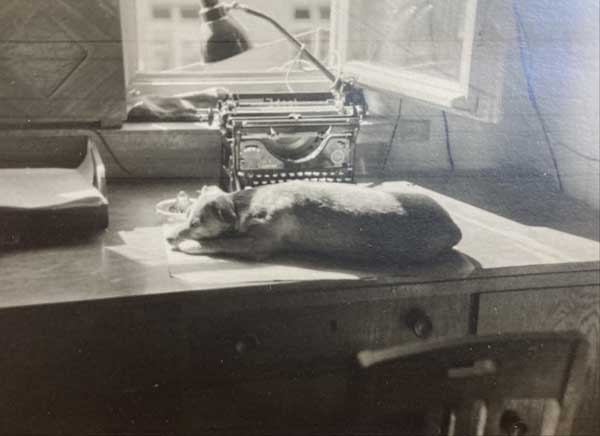
I feel certain that Hemingway was somewhere close by.
There are lots more photos in the two albums. Most of the people in the photos are unnamed, as are most of the places.
I sometimes think of those times, not all that long before I was born. The stories of all of those ordinary people who lived through extraordinary times and, perhaps, did extraordinary things, are fading. Maybe they told a few people part of their stories, and maybe someone remembers them. But it won’t be long before they are all nameless and forgotten, and it will be as if their stories never really happened.
